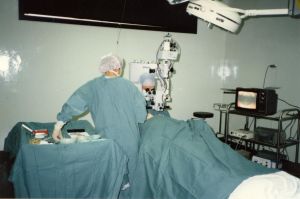According to a recent news article from Medical News Today, men suffer more complications resulting from total hip and knee replacement surgery than woman who undergo the same procedure. Both surgeries are used in patients with painful joint arthritis and joint deterioration.
 While, in some cases, a patient has suffered an acute trauma to the knee or hip where the joint is actually broken, most patients get the respective surgeries after living for years with chronic pain, and it gets to a point where they can no longer deal with the discomfort.
While, in some cases, a patient has suffered an acute trauma to the knee or hip where the joint is actually broken, most patients get the respective surgeries after living for years with chronic pain, and it gets to a point where they can no longer deal with the discomfort.
Researchers discovered how men fair worse after having surgery than women. First, the study noted, while men typically have total hip replacement or total knee replacement at an earlier age than women, they are more likely to not only have increased pain, but need second or subsequent surgeries to address the complications.
The study examined data from patients who had total joint replacement procedures at a single hospital between 2002 and 2009. This included almost 100,000 patients, which gives us an idea of the vast number of people having total hip and total knee replacements each year. The numbers of women having the procedures was slightly higher than men, but the numbers where close to being balanced. The numbers also reflected an average age of female patients being 70 and the average age of male patients being 65, which is standard.
When examining post-operative data, researchers found men were around 15 percent more likely to go to the emergency room for joint replacement complications than women within a month following surgery. Men were also more likely to have a heart attack following surgery than women, and men were 50 percent more likely to need a second surgery within two years to deal with the complications.
Continue reading
 Many patients who elect to have a total hip replacement operation have been suffering from chronic pain for a long time before having surgery. This is because many get a total hip replacement following a degenerative hip disease such as osteoarthritis. Continue reading
Many patients who elect to have a total hip replacement operation have been suffering from chronic pain for a long time before having surgery. This is because many get a total hip replacement following a degenerative hip disease such as osteoarthritis. Continue reading Product Liability Lawyer Blog
Product Liability Lawyer Blog








